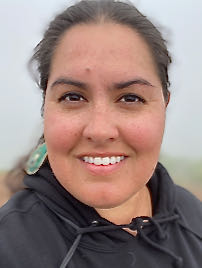Engaging Your Community in the Policy Process

Tiffany Jackson, Director of Membership Services
If you have ever been in a workshop or session with me, you have heard me say the School Board’s role is in governance, and one of the key ways the school board governs is through policy. But, does that mean developing policies should only involve school board members? No! If you want the best possible policy to govern your school district, you should be involving your school community: The Superintendent, staff, content experts, and families and other COMMUNITY members.
You may be thinking; how do we involve community in the policy process? If your district utilizes AASB’s model policies, the Board Bylaw 9310 in AASB’s Model Policy Manual reads in part, “The School Board has pledged to consider the will and needs of the community.” So how do you do this?
Here are just some of the ways the School Board can go about learning the will and needs of the community:
- Public Comment. Most boards provide an opportunity for the Community to provide public comment at school board meetings. This is a prime time for the Board to hear from the Community. However, are you preparing your community to be able to provide meaningful public comment? Think about how the Board lets the community know about the opportunity to provide public comment and the rules around providing public comment. Is the board effective in ensuring the community has access to the board packet and draft policies in order to provide informed comments?
- Written Testimony. Community members can also provide input on draft policies and updates through written testimony. However, not all community members are able to attend school board meetings to provide verbal comments. Work, transportation, child care needs, illness, are just some of the many reasons’ individuals may not be able to attend the in-person. How does to the Board ensure community members know providing written input on proposed policies is an effective way to communicate with the School Board?
- Direct Outreach/Invitation to Testify. While the Superintendent is generally the one responsible for drafting and making policy recommendations to the board, the Superintendent is not necessarily the expert on every topic discussed by the board. For example, if creating a policy around the local indigenous language program, think about how to involve the tribe.
- Are you discussing a policy you are wondering if another district has addressed? If so call AASB and we find out for you.
- What experts does the Board have access to in order to provide guidance on policy development?
- Does the Board have a process that intentionally and regularly solicits input from experts and key stakeholders? If not, how can the Board move forward with doing this?
Whatever the School Board decides to do when it comes to engaging with the community, be sure to be consistent. Policy is a critical governance function of the school board, and how best to consider the will and needs of the community than to solicit the information direction from the community itself.
Do you have other strategies for soliciting community input in your policy process? We would love to hear about them! Please share by emailing tjackson@aasb.org.
